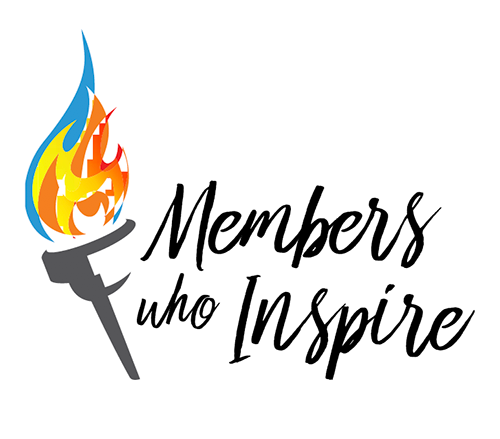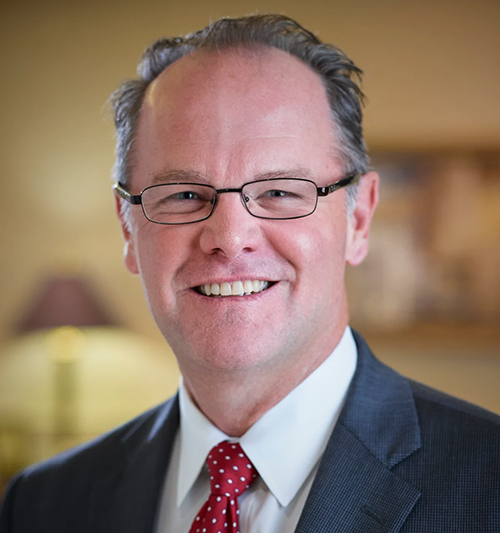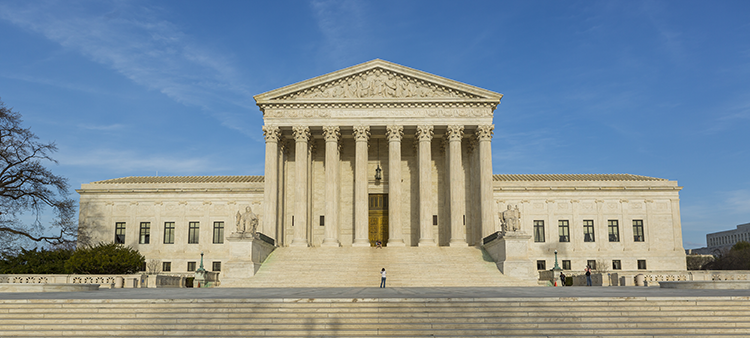Labor attorney uses art and law to draw attention to workers' rights
Labor of Love: Mark Gaston Pearce's Art

“We have seen that art contributes substantially to identifying the feelings and the desires and the power of working people," says Mark Gaston Pearce. (Photo courtesy of Mark Gaston Pearce.)
Mark Gaston Pearce started sketching in the margins of his textbooks as a high school student in Brooklyn, New York.
With encouragement from his teachers, he took drawing and painting classes once he got to Cornell University in 1971. But Pearce says he didn’t receive the same support from his parents, who were Jamaican immigrants and didn’t believe art skills would help him as a doctor, engineer or lawyer.
“So I didn’t spend a lot of time on art, but I also couldn’t leave it alone because it was always my passion,” he says.
Though Pearce continued to draw, paint and dabble in other media, he chose to study law in part because of the social unrest and public assassination of the Rev. Martin Luther King Jr. in 1968.
“I was exposed to all of that, and as a student of history, I thought pursuing the law would be where I would feel most comfortable,” says Pearce, who received his bachelor’s degree in government in 1975. “And then, discovering the laws that affect workers just fit so perfectly into my personal philosophy.”
Discovering labor law
While at the University at Buffalo School of Law, Pearce began interning in a regional office of the National Labor Relations Board. He became enthralled by the agency and its enforcement of the National Labor Relations Act, the law passed in 1935 that grants employees the right to form or join unions and to engage in protected activities addressing their working conditions.
“Here was this agency that was doing all of this incredible work and enforcing this statute that I knew very little about,” Pearce says. “I had the good fortune at that time to go to a school that had an abundance of labor law courses, and I took as many as I could.”
Pearce graduated from law school in 1978 and joined the National Labor Relations Board in Buffalo, serving first as a field attorney and then as a district trial specialist. After 15 years with the agency, he went into private practice and later opened the labor law firm Creighton, Pearce, Johnsen & Giroux with a few colleagues in 2002.
“We were thriving,” says Pearce, who represented unions, union members and employees. “But then [Barack] Obama became president. I was always interested in the National Labor Relations Board, because that was my first love. So I made inquiries and put my name up for consideration.”
In 2010, Obama appointed Pearce to serve as one of five members of the board in Washington, D.C. The following year, he became the board’s chairman—a role he held for more than five years.
Richard Griffin Jr. was a member of the board and then its general counsel. He became close with Pearce.

“He’s very knowledgeable about the board’s decisions and jurisdictions,” says Griffin, now of counsel with Bredhoff & Kaiser in Washington, D.C. “He’s also a good person to be around—he has a good sense of humor, he is a good communicator and he has a broad set of interests. So if you’re not talking about a case, there is certainly no shortage of topics to discuss.”
Pearce left the board at the end of his second term in 2018 and returned to Cornell as a visiting senior scholar and lecturer in the School of Industrial and Labor Relations. He then stepped into his current role as executive director of Georgetown University Law Center’s Workers’ Rights Institute.
Pearce, who is also a visiting professor at Georgetown Law, works with students and community advocates to enhance the labor rights of traditionally underserved low-income workers through education, policy reform and public discourse.
“Being able to connect with students and feel their enthusiasm while mentoring and giving advice on their career choices has just been a refreshing experience for someone who’s gotten a little long in the tooth and a little calloused,” says Pearce, who additionally works as an arbitrator.
The ‘other Rosies’
All this time, Pearce never put down his paintbrush.
He started concentrating on oil painting and spent much of his free time honing his skills. While in Buffalo, he set up an easel in his unheated attic. Now he works in a studio in his basement in Silver Spring, Maryland.
Pearce paints several times a week, usually on two or three canvases at a time. He always has been drawn to the human form and often re-creates interactions he observes between people taking public transportation or walking down the street.
Tapping into his interest in labor, he has a series of paintings of women of color who held industrial jobs during World War II. It’s a project that stems from a photograph he received from his doctor depicting an African American woman who worked as a riveter in an airplane factory. She is at the center of a series of paintings Pearce calls “the other Rosies.”
“I saw that the war effort was promoted through posters, and invariably these posters would be of Rosie the Riveter, of white women being the iconic symbol of the war effort at home,” Pearce says. “I knew there were other Rosies, and those other Rosies needed to be represented.”
Included in this series are paintings based on photographs by photojournalist Dorothea Lange. Lange is best known for her Depression-era work, but these photos capture the diverse men and women who helped build naval ships in California during the war.
In fall 2023, Pearce exhibited paintings in the West Harlem Art Fund’s show “Undaunted: We Are Still Here,” which featured six artists working in collage and mixed media to show urban scenes. He is talking with another group interested in showing his labor paintings and soon may collaborate with a fellow artist on additional work involving train commuters who work in the service industry.
Protecting those in need
Pearce supports the labor community in many other ways, including by mentoring law students through programs organized by the AFL-CIO and the Peggy Browning Fund.
He is an appointed member of the Federal Service Impasses Panel, which resolves disputes between federal agencies and unions representing federal employees, and previously served on the New York State Industrial Board of Appeals. He also is a longtime member of the ABA.
Pamela Jeffrey, a partner at Levy Ratner in New York City and co-chair of the ABA Section of Labor and Employment Law’s Practice and Procedure Under the NLRA Committee, has known Pearce since he was in private practice. She calls him a “truly remarkable individual” who is grounded in the real world and puts people first in his work.
“He’s so committed to labor rights and civil rights and social justice and the way all those issues overlap and intertwine,” Jeffrey says. “That must be great for the students at Georgetown, because I’m sure he delivers invaluable information about workers’ rights in a way that not only gives them a firm understanding of legal principles and challenges, but really focuses on the human factor.”
Looking ahead, Pearce hopes to continue providing the country’s most vulnerable workers with a better understanding of and better access to existing labor protections. While the National Labor Relations Act is the foremost federal labor law, he says it hasn’t always been inclusive or effective in addressing needs, especially for low-income workers.
“Educating workers about their rights and educating employers about irresponsibility are essential to achieving some kind of worker equality,” Pearce says.
And what role does his art play?
“Art, oftentimes, is used to make things resonate, to bring an aesthetic to something that is essential,” he says. “We have seen that art contributes substantially to identifying the feelings and the desires and the power of working people. I hope to continue to facilitate that.”
Members Who Inspire is an ABA Journal series profiling exceptional ABA members. If you know members who do unique and important work, you can nominate them for this series by emailing [email protected].
This story was originally published in the April-May 2024 issue of the ABA Journal under the headline: “Labor of Love: Mark Gaston Pearce uses art and law to draw attention to workers’ rights.”




